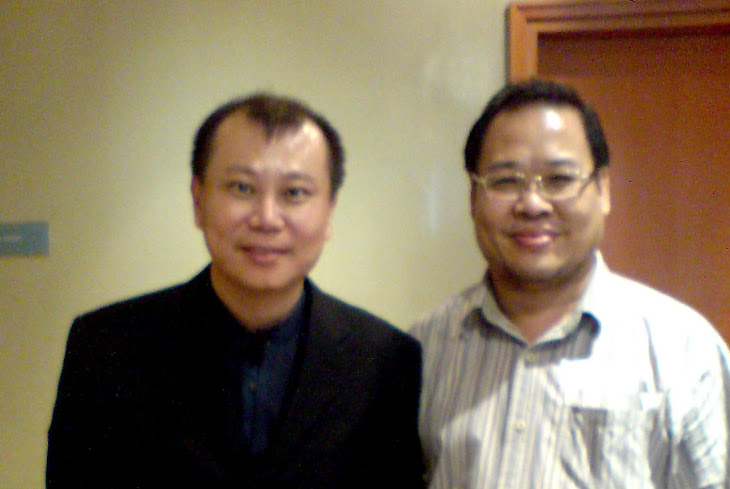
A few days ago, a reporter asked me if I was losing money in real estate. My reply was, "No, I'm making money."
Confused, he asked, "How can you be making money during the subprime disaster?" I explained that since the real estate market took a downturn, there were more people renting rather than buying, which is great for my apartment business. I also informed him that I'm raising rents since demand for affordable apartments is so high. When someone moves out, I increase the rent and new tenants line up, which means my cash flow is increasing.
He then asked, "Are you looking for new investments?"
A shocked look came over his face when I said, "I've been investing heavily in the stock market since August 2007. I've moved several million dollars into the market."
"The stock market?" he stammered. "Stocks are crashing. Why are you in the stock market? Besides, I thought you were a real estate investor?"
Ignorance Isn't Bliss
As Warren Buffett has said, it's important for society to have accurate and informed sources of information. While I agree, I sometimes wonder about the intelligence of many financial journalists, both in print and the electronic media.
For example, lately on financial TV stations, the reporters have been talking about the run-up in gold and asking, "Is it time to invest in gold and gold stocks?" What a ridiculous question. Now isn't the time to be investing in gold or gold stocks -- that time was 10 years ago, when gold was below $300 an ounce. Investors should've taken substantial positions when gold was cheap. For reporters to be talking about gold today is no different than them reporting on the hot real estate market in 2005, just before the top blew off.
I had dinner with a friend of a friend the other night and he was telling me about the Rothschild formula for investing. According to him, this involves not participating in the first 20 percent or the last 20 percent of an investment run-up. Instead, it's investing in the middle 60 percent, when risks are low and the direction of the price is determined. As the asset value approaches what appears to be the last 20 percent, you sell and move on to another asset class.
As we all know, most amateurs (and, possibly, many reporters) only participate in the last 20 percent.
Take Notes
I wondered if the reporter who asked why I was investing millions in stocks was an investor himself. I did my best to explain to him that there are two things professionals invest for: 1) Capital gains, and 2) Cash flow.
I said, "The amateurs who come in at the top 20 percent of a market are generally investing only for capital gains. In the last real estate boom, the 'flippers' who got no-document, zero-down loans paid very high prices, and hoped for a greater fool than them to take the property off their hands.
"These are some of the people being faced with forecloses today. They're the investors who make the news -- not the investors who are making money."
The reporter then asked me, "So what do you invest for?"
My reply? "Both. If I can, I want both capital gains and cash flow."
I went on to explain that I was investing millions in stocks that were paying a high dividend -- cash flow -- and also had their prices battered down by the market crash, a loss of capital gains.
Spelling It Out
He wasn't the brightest reporter, since he had trouble with the idea of investing for both cash flow and capital gains. After about an hour of explanation, he finally began to understand that I'm not just a real estate investor -- I'm someone who invests for capital gains at a great price, or cash flow at a great price, regardless of the asset class. If the deal is right, it doesn't matter if it's in real estate, commodities, a business, or paper assets.
Here's an example of capital gains for a great price: Back in the 1990s, every time I had some extra cash I would buy some gold or silver. Although I didn't receive any cash flow from gold or silver I knew I was purchasing the metals at a great price, and that someday those prices would rise again.
An example of buying for cash flow at a great price is when I buy a stock that pays a dividend. I wait until the stock market dips and then buy, which is what I'm currently doing. One of the better companies I've been buying is a bulk cargo shipping company that's hauling U.S. grains to India. The more the dollar drops in value, the more grains we export. Every time the market drops, I buy more of this stock at a great price, because I love the cash flow from dividends.
Finally, an example of buying both capital gains and cash flow at a great price is when I find an apartment building at a bargain, and then increase the rents. By doing so, I increase the cash flow and the property value, which translates into capital gains.
Leave It to the Pros
When I watch professional football, I love listening to John Madden because I know he knows what he's talking about. He's been both down in the trenches and in front of the bench as a coach. He knows the game. By that token, one financial reporter I respect is Bloomberg's Kathleen Hayes. She's a savvy reporter who knows what she's talking about. I wonder about some of the other financial reporters.
The problem with much of the financial news in print and on the web, radio, and television is that it comes from journalists who may not be investors. When I listen to most journalists whine and cry about the subprime mess, the slowdown in the economy, and the volatile stock market, I can all but tell that they're not really investors. None of these events really has much impact on professional investors, who follow market trends and are familiar with the underlying fundamentals of the assets they investing in.
So the next time you hear a reporter ask, "Is this the time to be getting into stocks, bonds, real estate, gold, silver, or oil?" remember that it's probably the time to be looking elsewhere. And keep in mind the Rothschild formula of investing. You never want to be too early -- and you also never want to be too late.
sumber: http://finance.yahoo.com/expert/article/richricher/62341

![[Most Recent Quotes from www.kitco.com]](http://www.kitconet.com/images/quotes_7a.gif)




Tidak ada komentar:
Posting Komentar